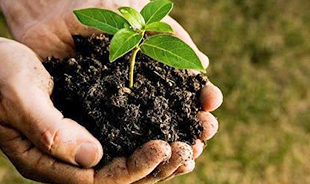Soil analysis and plant analysis

Soil analysis
- NN 20/2018; Law on Agricultural Land
- NN 47/2019; Ordinance on the methodology for monitoring the condition of agricultural land
- NN71 / 2019; Ordinance on the protection of agricultural land from pollution
- NN 7/2013; Ordinance on the content of the action program for the protection of waters against pollution caused by nitrates of agricultural origin
- NN 60/2017; II. Action program for the protection of waters against pollution caused by nitrates of agricultural origin
- Decision for performing soil analysis activities in terms of monitoring the condition of agricultural land CLASS: UP / I-320-02 / 17-01 / 02
According to the new law on agricultural land NN 20/2018 (Article 7), agricultural producers are required to monitor the condition of agricultural land located in the ARKOD system, by examining soil fertility periodically at least every four years.
What is soil analysis and why is it needed?
Soil analysis includes all soil sampling procedures, laboratory analysis of samples and interpretation of results. In a narrower sense, soil analysis is a set of several different chemical procedures that determine both the level of nutrients in a soil sample and its chemical, physical and biological properties important for plant nutrition and health. Therefore, the results of soil analysis allow the assessment of the type and amount of fertilizer to compensate for each nutrient in the soil, given its availability, condition and phenophase of the crop, and the planned crop yield. The fertilization recommendation must be based on physico-chemical data of soil analysis, and the calculation of the required dose must take into account profitability, planned or realistically possible yield, specific needs of the cultivated crop and soil fertility potential. Any improvisation, including subjective visual assessment, most often results in reduced yields, crop quality, and increased production costs. Nowadays, when high fertilizer prices and intensive production are standard, soil analysis becomes necessary in planning primary agricultural production.
Ordinance on the methodology for monitoring the condition of agricultural land NN 47/2019 Article 32 states the mandatory parameters for testing soil fertility:
- Basic agrochemical soil analyzes for annual / field crops:
- soil reaction (pH KCl and H2O)
- humus content
- content of physiologically active nutrients P2O5 and K2O
- hydrolytic acidity or total carbonate content
- mechanical composition of soil.
- Basic agrochemical analyzes of soil for permanent crops:
- soil reaction (pH KCl and H2O)
- humus content
- total nitrogen content
- content of physiologically active nutrients P2O5 and K2O
- hydrolytic acidity or total carbonate content
- content of physiologically active lime (only for permanent crops when the carbonate content is greater than or equal to 10%)
- skeletal content (for skeletal soils)
- mechanical composition of soil.
As additional parameters of soil analysis we can determine:
- Nitrate nitrogen, NO3 (fast reflexoquant method)
- Ammonium nitrogen, NH4 (Nessler method)
- Current humidity
- Dry matter
- Easily accessible manganese, Mn (extraction with ammonium acetate and EDTA)
- Easily accessible zinc, Zn (extraction with ammonium acetate and EDTA)
- Easily accessible copper, Cu (extraction with ammonium acetate and EDTA)
- Easily accessible iron, Fe (extraction with ammonium acetate and EDTA)
- Easily accessible Boron, B (azomethine-H method)
- Organic carbon, C (bichromate method)
- Electrical conductivity
- Total micro / macroelements: K, Ca, Mg, Fe, Zn, Cu, Mn, Mo, Na (flame technique)
- Heavy metal: As, Cd, Ni, Pb, Cr, Mo, Co, (graphite technique), Hg (DMA)
Fertilization recommendations
- Recommendation for conventional fertilization
- Recommendation for integrated fertilization
- Recommendation for organic fertilization
- Five-year fertilization plan
- Recommendation for fertilization with several different yields
Fertilization recommendation contains
- Recommendation of fertilization needs for N, P and K nutrients based on their expected yield
- Calcification (base saturation, need for Ca, CaO and carbocalc)
- Cation exchange capacity
- Installment N-min (kg N / ha / year)
- N-deficit (N / ha or kg of urea / ha)
- Tips and opinions
Sampling
Soil samples may be taken by authorized soil fertility testing laboratories or natural persons who have undergone training for soil sampling for analysis by the Ministry of Agriculture.
Our trained field service will make sure that the samples are taken in the correct way by the accredited method.
The benefits of soil analysis:
- optimization of fertilization costs
- improving fertility
- increased yields
- profitability of production
- soil protection
Plant material analysis
BASIC ANALYSIS OF PLANT SUBSTANCE contains the following parameters:
- Total Nitrogen, Phosphorus, Potassium, Calcium, Magnesium, Iron, Copper, Zinc, Manganese.
Note: For better determination of the deficiency of certain elements of plant nutrition, it is desirable to have a chemical analysis of the soil as well as visual diagnostics.
GENERAL SYMPTOMS OF LACK OF NECESSARY PLANT NUTRITIONAL ELEMENTS (EXCLUDING C, O and H):
Nitrogen (N): Symptoms of deficiency on older leaves. Symptoms mainly spread throughout the plant, the lower leaves dry out and die: the plants are light green, the lower leaves turn yellow, dry to brown, the stems become shorter and thinner
Phosphorus (P): Symptoms of deficiency on older leaves. Symptoms mostly spread throughout the plant, the lower leaves dry out and die: the plants are dark green, often visible red or purple, the lower leaves are yellow, dry to dark green, the stems become shorter or thinner.
Potassium (K): Symptoms of deficiency on older leaves. Symptoms mostly localized, the lower leaves do not dry out, but are variegated or chlorotic, the edges of the leaves are convexly conical or wrinkled: leaves dotted with discoloration or chlorotic, small necrotic spots between leaf veins or near the tip and edges of leaves, stems thin

